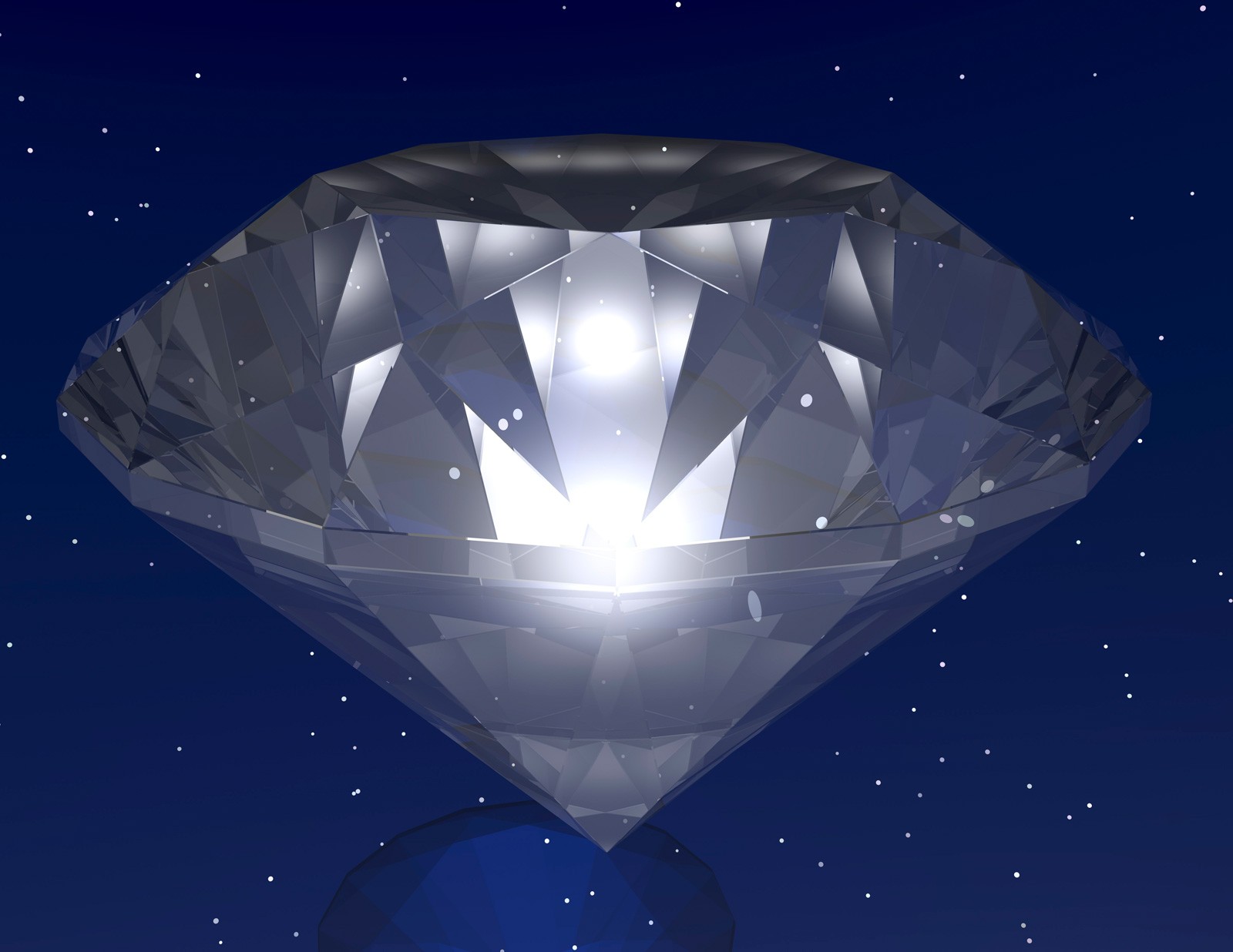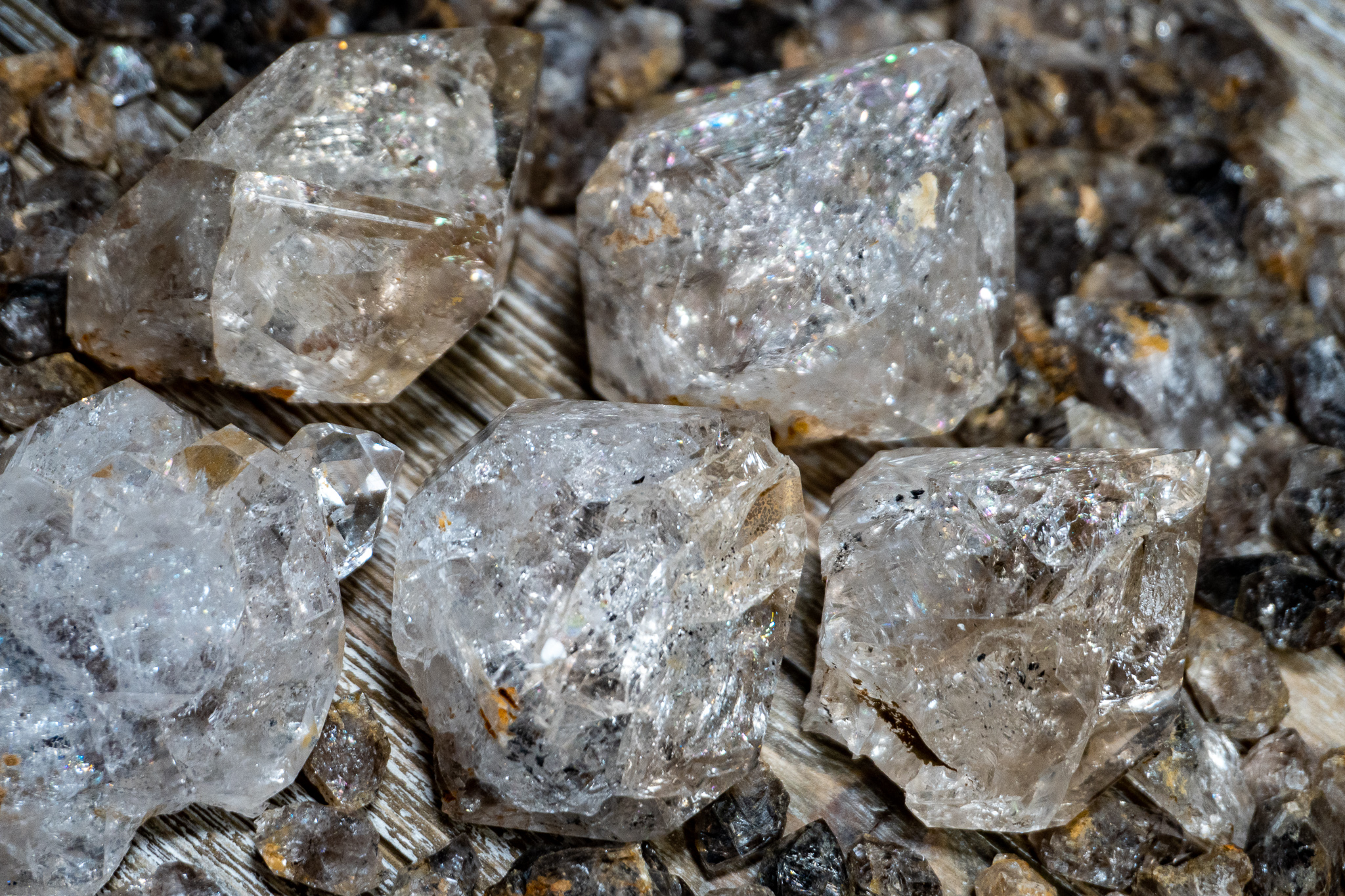Symbolism and Cultural Significance

Diamond meaning – Diamonds have long been associated with a range of symbolic meanings, varying across different cultures and historical contexts. These meanings have been shaped by the stone’s unique properties, including its hardness, brilliance, and rarity.
In the realm of precious stones, diamonds symbolize strength and invincibility, like the unwavering blade of a sword. Just as the diamond withstands the test of time, the sword represents the courage and determination to overcome obstacles. But as with all things, the diamond’s brilliance can also be a source of temptation, a reminder that even the most precious of possessions can lead us astray.
In many cultures, diamonds have been seen as symbols of purity, innocence, and eternal love. This symbolism is often reflected in their use in engagement rings and other forms of jewelry associated with romantic relationships.
A diamond, a symbol of purity and resilience, shines brightly even in the darkest of nights. Like the unyielding spirit of Rihanna, who has overcome countless obstacles to rise to the pinnacle of success. Rihanna tomorrow will continue to inspire us with her strength and determination, reminding us that even in the face of adversity, the diamond within us can shine through.
Historical and Societal Contexts
The symbolic meanings of diamonds have been influenced by their historical and societal contexts. In ancient times, diamonds were believed to possess magical powers and were often used in religious ceremonies and rituals. In the Middle Ages, diamonds became associated with wealth and status, and they were often worn by royalty and the nobility.
In the depths of ancient lore, diamonds have long been whispered to hold a power beyond their glittering brilliance. Legends speak of a mystical sword pit , where the blade forged from the finest steel would cleave through flesh and bone with ease.
And as the sword’s keen edge parted the veil of darkness, the radiant glimmer of diamonds would illuminate the path to triumph.
The discovery of large diamond deposits in South Africa in the 19th century led to a significant increase in the availability of diamonds, which in turn made them more accessible to a wider range of people. This led to a shift in the symbolism of diamonds, which became more associated with personal achievement and success.
Evolution of Symbolism
The symbolism of diamonds has continued to evolve over time. In the 20th century, diamonds became increasingly associated with luxury and glamour, and they were often featured in advertising campaigns for high-end products. In recent years, there has been a growing awareness of the environmental and social issues associated with diamond mining, which has led to a reassessment of the stone’s symbolism.
Physical and Gemological Properties

Diamonds, the epitome of brilliance and value, are not merely exquisite adornments; they are geological wonders with captivating physical and chemical properties that set them apart from all other gemstones. Their exceptional qualities have captivated humankind for centuries, making them the most sought-after and precious of all gems.
Diamonds are formed deep within the Earth’s mantle, where intense heat and pressure transform carbon atoms into a crystalline structure of unparalleled strength and beauty. Composed almost entirely of pure carbon, diamonds possess a remarkable atomic arrangement known as a diamond lattice, where each carbon atom is covalently bonded to four other carbon atoms, forming a rigid tetrahedral framework.
Composition and Geological Formation
The formation of diamonds requires specific geological conditions that are rarely found on Earth. Extreme temperatures, ranging from 900 to 1300 degrees Celsius, and immense pressures of 45 to 60 gigapascals, are necessary for the transformation of carbon into diamond. These conditions are typically found at depths of 150 to 200 kilometers beneath the Earth’s surface, where the mantle’s molten rock, or magma, contains dissolved carbon.
As magma rises towards the Earth’s surface, it can carry diamond-forming carbon to shallower depths. However, most of these diamonds are destroyed during the ascent due to changes in temperature and pressure. Only a small percentage of diamonds survive the journey and are brought to the surface through volcanic eruptions or by being transported in kimberlite pipes, which are narrow, carrot-shaped volcanic formations.
Physical and Chemical Properties, Diamond meaning
Diamonds possess an array of extraordinary physical and chemical properties that distinguish them from all other gemstones. These properties are responsible for their exceptional brilliance, durability, and value.
- Hardness: Diamonds are the hardest known natural material, earning a perfect 10 on the Mohs scale of mineral hardness. This remarkable hardness makes diamonds highly resistant to scratches and abrasions, ensuring their enduring beauty and longevity.
- Thermal Conductivity: Diamonds have the highest thermal conductivity of any known material, meaning they can conduct heat exceptionally well. This property makes diamonds ideal for use in industrial applications, such as cutting tools and heat sinks.
- Electrical Insulation: Diamonds are excellent electrical insulators, making them valuable in electronic components and high-voltage applications.
- Optical Properties: Diamonds have a high refractive index, meaning they bend light significantly. This property, combined with their exceptional transparency, gives diamonds their characteristic brilliance and “fire.” The dispersion of light in diamonds, known as “fire,” is also responsible for the rainbow of colors that can be seen when a diamond is held up to the light.
Factors Influencing Diamond Quality and Value
The quality and value of a diamond are determined by several factors, known as the “4Cs”:
- Carat Weight: Measured in carats, the carat weight refers to the size of a diamond. One carat is equal to 200 milligrams. Larger diamonds are generally more valuable than smaller ones, but the relationship between size and value is not linear.
- Clarity: Clarity refers to the presence of inclusions or blemishes within a diamond. Diamonds with fewer inclusions are considered more valuable. Inclusions can range from tiny crystals to larger feathers or clouds that affect the diamond’s transparency and brilliance.
- Color: Most diamonds have a slight yellow or brown tint, but the most valuable diamonds are colorless or near-colorless. The color of a diamond is graded on a scale from D (colorless) to Z (light yellow or brown).
- Cut: The cut of a diamond refers to the way it has been shaped and polished. The cut affects the diamond’s brilliance, fire, and scintillation. The most popular diamond cuts include the round brilliant cut, the princess cut, and the emerald cut.
Diamond Industry and Applications: Diamond Meaning

The global diamond industry is a complex and multifaceted sector that encompasses mining, processing, and distribution. The industry is highly concentrated, with a few major players controlling a significant share of the market. The largest diamond mines are located in Africa, particularly in countries such as Botswana, South Africa, and Angola. Once mined, rough diamonds are processed and cut into various shapes and sizes to create polished diamonds that are used in jewelry and other applications.
The diamond industry has been criticized for its environmental and ethical practices. Mining operations can have a significant impact on the environment, including deforestation, water pollution, and air pollution. Additionally, the industry has been linked to human rights abuses, such as child labor and forced labor. In response to these concerns, the Kimberley Process was established in 2003 to certify diamonds as conflict-free. However, the Kimberley Process has been criticized for its limited effectiveness, and there is still concern about the ethical sourcing of diamonds.
Industrial and Technological Applications
In addition to their use in jewelry, diamonds also have a variety of industrial and technological applications. The unique properties of diamonds, such as their extreme hardness and thermal conductivity, make them ideal for use in cutting tools, abrasives, and electronics. Diamond-tipped cutting tools are used in a wide range of industries, including construction, manufacturing, and mining. Diamond abrasives are used in grinding and polishing operations, and diamond heat sinks are used in high-power electronics to dissipate heat.
The development of synthetic diamonds has further expanded the industrial applications of diamonds. Synthetic diamonds can be produced in a controlled environment, which allows for the creation of diamonds with specific properties tailored to specific applications. Synthetic diamonds are now used in a variety of cutting-edge technologies, such as laser cutting, microelectronics, and medical devices.
A diamond, a symbol of eternal love and commitment, is said to be as hard as a sword. Just as a sword can pierce through flesh and bone, a diamond can cut through the toughest of materials. Yet, despite their strength, both the diamond and the sword are fragile.
A diamond can be shattered with a single blow, and a sword can be broken if it is not used with care. In this way, the diamond and the sword are a reminder that even the most precious and powerful things can be destroyed if they are not handled with care.
Diamonds, those glittering treasures born from the depths of the earth, have long captivated hearts with their brilliance. Yet, their allure extends beyond mere aesthetics. Within their crystalline structure lie hidden secrets, like quantum pits, a realm where light and matter dance in harmony.
These minuscule pits, like tiny mirrors, manipulate light in a way that reveals the diamond’s innermost qualities, unlocking its profound meaning and reflecting the complexities of the world it adorns.